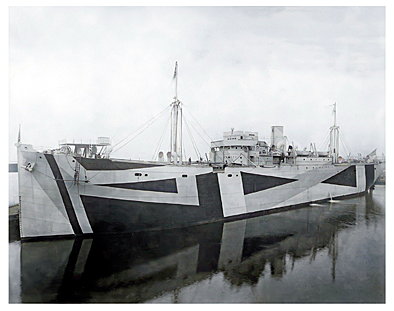Francis McCullagh, Control of Food Gives Soviet Power Over Its Followers, in Philadelphia Inquirer, November 14, 1920, p. 43—
USS Federal in dazzle camouflage scheme, 1918
Another friend, whom I made was a Bolshevik functionary, of what is called the political department, who dabbled in a multitude of things. I once heard him lecture in a theatre on an opera which was about to be produced before workmen who had never been to an opera before in their lives, his object being to make these workmen appreciate music and the acting. He also lectured on literature, organized theatricals in factories and military barracks, taught muzhiks to write, wrote himself in the newspapers and painted the whole front of a Bolshevik bookshop with mad daubs of every possible color.
This latter achievement he described as Futurism, but it seemed to me an attempt to epitomize on a surface twenty feet square all the camouflage schemes devised for merchant steamers during the war. The sturdy, old-fashioned house on which this atrocity was perpetrated looked as outlandish as a cow that had one horn painted black, and the other sky blue, the tail green and the body in irregular patches of half a dozen different colors. I expressed no surprise since my entry into Bolshevik Russia I had quite lost the capacity for wonder.
A blog for clarifying and continuing the findings that were published in Camoupedia: A Compendium of Research on Art, Architecture and Camouflage, by Roy R. Behrens (Bobolink Books, 2009).